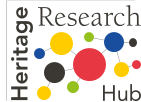Project facts
Presentation
The core of the project consisted in developing new polyfunctional materials as well as nanocomposites to engineer smart new materials with enhanced properties (both physical and chemical). A key requirement is that the developed materials must be sustainable and compatible with the art materials to be preserved/restored.
NANORESTART objectives can be grouped within four categories that interact synergistically to fulfill the target of long-term preservation of modern and contemporary cultural heritage. The objectives are shortly discussed below.
Objective 1: Development of new tools and materials for conservation
The synthesis of new nanomaterials with tailored functionalization and the formulation of complex systems for compatible and durable conservation of modern and contemporary art materials were the main and most challenging goals of the project. The work focused on:
- The development of new tools for controlled cleaning,
- The strengthening of the materials constituting the work of art and the protection of surfaces,
- The development of nanostructured substrates and sensors for more accurate and sensitive chemical analysis.
Objective 2: Evaluation of the environmental impact of the new technologies
Sustainability was a cornerstone of NANORESTART. Solutions developed in the framework of this project are in line with the EU REACH chemical safety regulation, whose final aim is the sustainable management of chemicals and materials. To achieve this goal, a fully dedicated Work Package (i) identified a set of indicators, namely environmental (assessing the impact), economic (describing the benefits from an industrial perspective), as well as technical (i.e linking technologies compatibility with their sustainability); (ii) developed a Multi-Criteria Decision Analysis (MCDA)-based methodology in order to integrate them into a technology-specific sustainability judgment/score; (iii) incorporated the proposed Sustainability Assessment methodology in ad hoc guidelines to support manufacturers towards the certification of their nano-enabled technologies.
Objective 3: Exploitation of the new technologies
The new solutions are affordable in terms of cost and/or complexity of operation to the end-users, i.e the conservation practitioners, as requested by the work program topic. In this respect, the project accelerated the industrial exploitation of newly developed technologies. The process was facilitated by the understanding of barriers to innovation that still exist in this field, by supporting the involvement of SMEs in R&D, subsidizing the development of pre-competitive products, and exchanging knowledge with end-users extensively.
Objective 4: Dissemination
The valuation of cultural heritage largely depends on experts and policy-makers, who define (often in collaboration with national conservation institutions) the optimal protocols to be used by conservators. However, cultural heritage and conservation policy-makers are quite often far from the scientific development necessary to evaluate the impact of new research. For this reason, the real expectations of conservators are often not met. The NANORESTART consortium grouped important European/international (rather than national or local) museums, heritage institutions, and enterprises to address this issue.
